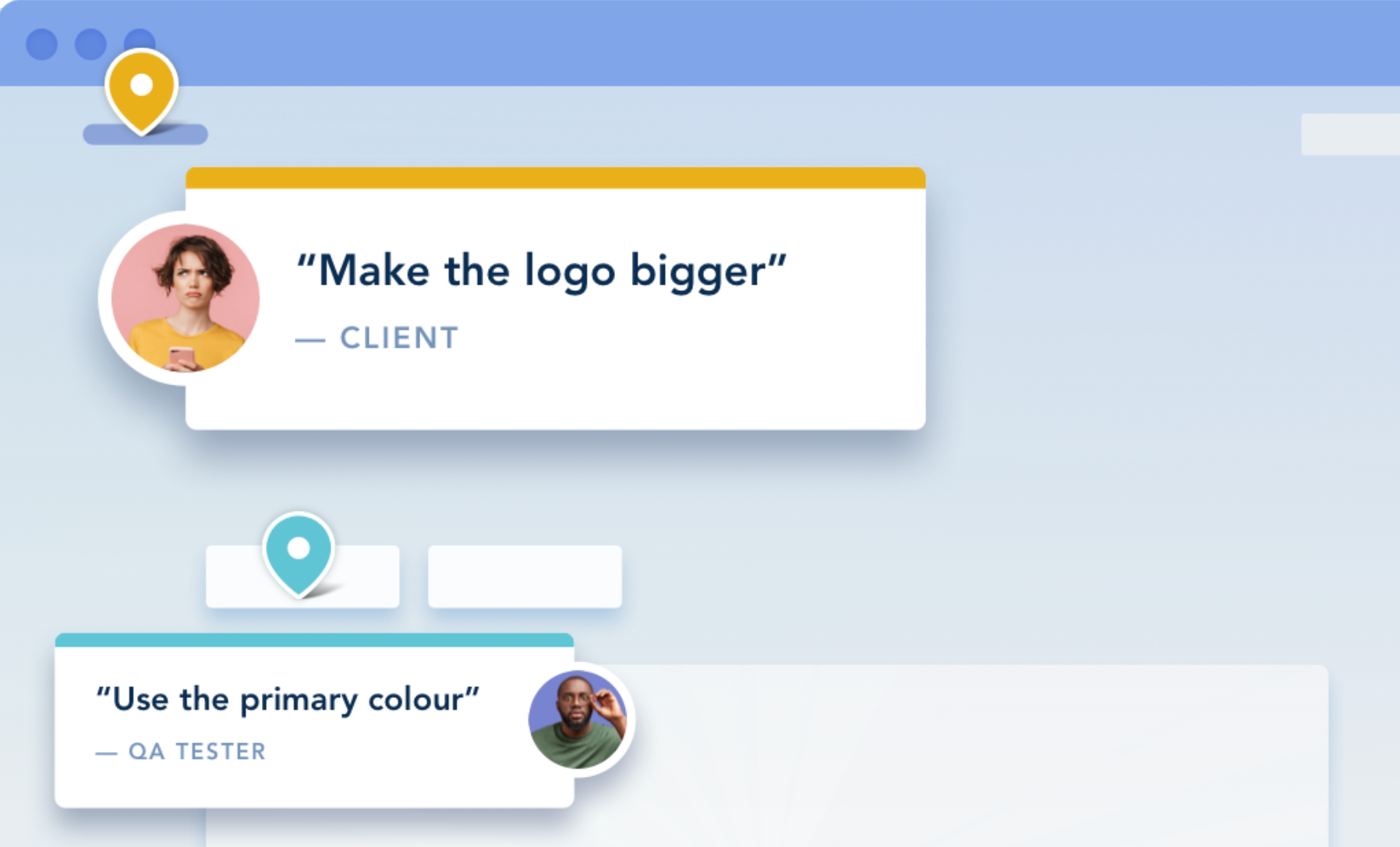The end goal of every web designer or developer is to create a functional, visually appealing website that helps the client grow their business. To do that, it’s imperative to design and develop for a great user experience for the client’s prospects.
There are different schools of thought and many specific techniques that designers and developers employ to do so.
One of those is the concept of design thinking.
Whether you’re developing a website for a client in the healthcare industry or revamping an existing ecommerce website to better showcase a client’s new products, here are the five benefits of design thinking for website design and development.
Contents:
What is Design Thinking?
Design thinking is a human-centered approach to problem-solving. It can be used in designing and creating any type of product or service, including designing and developing websites, apps, and software. What makes this methodology so effective is that it forces team members to take a user-centric approach to designs. Every step in the process takes the user’s needs into account.
Before we get into how human-centered design thinking can benefit your agency, let’s take a closer look at the five phases of the design thinking process.
The Five Phases of the Design Thinking Process
- Empathize
- Define
- Ideate
- Prototype
- Test
Keep in mind that these phases aren’t linear in nature. While the process involves following these five steps in order initially, designers and developers often circle back and repeat steps. It’s sometimes necessary to have secondary ideation sessions after prototyping or revisit the define phase after testing.
Empathize
This design thinking approach considers the user’s problems, requirements, and motives for using the website. It’s the point in the innovation process that challenges assumptions about what you think the users want and puts you in their shoes to truly understand their needs.
Define
Here, you define the problem (or problems) identified in the empathize phase. Once identified, write down what those problems are and structure a plan to address them, always keeping in mind that solving those problems will make the user experience better overall.
Ideate
Design thinking is a solution-based approach to web design, and the ideate phase is when you start coming up with solutions to solve the problems you’ve defined. In brainstorming sessions with your internal team, create a series of potential solutions that will help to improve the user experience, satisfy the user’s needs, and encourage them to revisit the website often.
Prototype
Creating prototypes of your potential solutions can save you time and money. Rather than doing a full website build, create prototypes that address solutions, then analyze them from different perspectives before deciding which solution to proceed with.
Test
To determine which prototypes work best, test them. When performing tests and providing feedback, do so from the user’s point of view. Design thinking is iterative in nature, so once testing is complete, you may need to revert back to the define or ideate phases to re-confirm that your final website build meets the needs determined in the empathize phase.
The 5 Benefits of Design Thinking

Now that you’ve had a refresher course in what design thinking is, let’s take a look at what really matters — how design thinking can help you design and develop better websites.
There are five key ways.
1. Gain a Better Understanding of the Client and Their Customers
We’ve already discussed how the design thinking process isn’t linear and that teams often circle back and forth between different phases. But it always starts with the empathize stage. While it’s important to have an understanding of the client’s business model and objectives, the empathize phase isn’t the time to empathize with the client at all.
It’s time to empathize with the client’s customer.
Doing so gives designers and developers a better understanding of the user’s needs and what they want to get out of the website. The more you can put yourself in the customer’s shoes and the better you understand what the customer needs, the easier it will be to design and build a site that addresses, meets, and exceeds those needs. If the client knows how to write a web design brief they can provide these customer insights for you.
Once you clearly understand the customer, structure an approach to designing and developing. Every decision made in the process should be in an effort to meet customer needs and wants in the most effective way.
So how can agencies go about gathering this info?
Conduct In-Depth Client Interviews
Most clients have a solid understanding of who their customer is. They have brand personas, a target demographic, and know what their customer responds to and what turns customers away.
Spend some time digging into the customer's mind by asking the client for direct feedback on who their customer is. While many clients may provide such information in their style guide, hearing them articulate it in their own words can be even more impactful.
You can also research competitor websites and see how your client’s competition is addressing (or failing) to address their customers’ concerns.
Acting in the shoes of a customer, including when visiting competitor sites, is a great way to empathize with their needs and understand where the competition may be frustrating them or failing to provide the experience they’re looking for.
Related: 7 Rules for Agency and Client Relationships
2. Encourage Creativity
The ideate phase encourages creativity, and that includes creative problem-solving and coming up with creative solutions to obstacles that you may face along the way. It forces you to consider those obstacles and put a plan in place to alleviate them. This leads to providing more (and more innovative) solutions for a better user experience.
Because design thinking requires you to keep a creative, open mind throughout the process, it also prevents you from getting trapped within the confines of your own experience and expertise.
The longer you do a particular job, the easier it is to feel like you know everything there is to know about it. You’re not alone if you think you’ve already figured out all of the best possible solutions in your work with previous clients — but you might be wrong. There is always room to grow, no matter how great of a designer or developer you may be.
Don’t rely solely on your experience from past projects or take the same approach over and over again simply because it has worked in the past.
Whether you’re a brand new web developer or the most experienced member of the design team, challenge your creativity, force yourself to think differently, and consider that a new approach could be more effective than tried and true approaches you’ve taken to past projects.
Looking at a project strictly from a design/development perspective will only limit the possibilities. Look at the project from the user’s perspective to better figure out what the customer needs to get out of the site.
3. Challenge Assumptions
You may think you already know the best way to design and develop a website for a particular client, but do you?
Maybe not.
Along with challenging creativity, design thinking encourages you to challenge assumptions, turning designers and web developers into expert problem solvers who can solve problems that aren’t all that obvious. The design thinking methodology forces you to think outside the box in a way that addresses issues that might (or might not) arise.
As a designer or developer, you already know that a particular approach will produce a particular result. But there’s always the option to take a different approach, which could produce numerous results you hadn’t even thought possible.
Designing and developing a website with a cookie-cutter approach can trap you in a rut, just like how your prior experience can cause you to rest on what you already know. You might be amazed at what you can create if you challenge your brain to try something new.
Your clients’ customers are human beings with human needs, and those needs evolve over time. With design thinking to challenge your assumptions, redefining problems and providing better solutions as users’ needs change will be easier.
See also: Improve UX With Google HEART

4. Meet and Exceed Client Goals
The goal of every designer and developer is to meet and exceed the goals of clients and stakeholders. The best way to do that is with effective prototyping and continuous testing.
Through prototyping and testing, agencies can improve quality assurance by getting feedback directly from clients and (sometimes) even customers of the client.
Don’t wait until the last phase of the project to have your client test out the site. Instead, prototype and test early on in the development stage and throughout the design process. Testing in the early development stages allows you to make quick adjustments, act upon feedback faster, and deliver the final product to the client in time or (bonus!) ahead of schedule.
While there are many ways to approach testing with your internal team, testing and collecting client feedback is a whole different story. It’s best to simplify the process and make it as brainless and easy as possible if you want your clients to respond in a timely manner.
You can do that with BugHerd.
BugHerd is a website feedback collection tool where testers (internal or external) can post website feedback via digital sticky notes on a web page. Whether it's for e-commerce, QA & UAT Testing, or a new website build, check out our use case studies to ensure Bugherd is right for you!
It doesn’t require any coding or design skills, which makes it perfect for clients and clients’ customers that aren’t tech savvy. With a few clicks over an image, a text, or a button on the page, anyone with permission to test the site can post feedback with ease.
Start your 14-day free trial of BugHerd today.
5. Make the Client’s Website Stand Out from the Competition
The non-linear process of design thinking requires you to revisit the concepts of empathizing and ideation throughout the process. Doing so helps to improve the UX design process and better address the real-world needs of your end users.
As a web designer or developer, you’re not really creating a website for your client — you’re creating a website for their customers. If the website doesn’t meet their needs in terms of visual design and site functionality, they won’t stick around. They’ll just move onto a competitor’s website that provides a better experience.
Are all websites built with design thinking in mind?
Absolutely not. But if you want to create the best website possible, assume that all the competing sites you’re working against have been created with the best design principles in mind.
Combine the concept of design thinking with solid quality assurance and frequent testing, and you can deliver a website that both impresses your client and their customers. Win-win.
You may also be interested in: Creating Harmony In Web Design With Analogous Color
Design thinking is a creative and effective way to solve real-world problems, and it allows you to take a more innovative approach to web design than simply doing what you already know.
Design thinking is not a new concept, but it is one that website designers and developers seem to be increasingly emphasizing. As the number of websites grows exponentially, you can utilize a design thinking approach to achieve one rather simple goal:
To make every website you build better than the last.
As you've just learned, design thinking can be a game-changer for creating exceptional user experiences. However, even the most carefully crafted designs can always be improved with feedback. That's where Bugherd’s website feedback tool comes in. So, what are you waiting for? Sign up for our 14-day trial today and start designing with confidence!

















But don't just take our word for it.
BugHerd is loved by 10,000+ companies,
350,000+ users across 172 countries.
4.8/5
4.7/5
4.5/5
5/5
8.7/10
Sam Duncan 📱📏 🌱
@SamWPaquet
"@bugherd where have you been all my life??
We just migrated our bug tracking over from Asana and have at least halved our software testing time🪳👏📈. "
Ashley Groenveld
Project Manager
“I use BugHerd all day every day. It has sped up our implementation tenfold.”
Sasha Shevelev
Webcoda Co-founder
"Before Bugherd, clients would try to send screenshots with scribbles we couldn't decipher or dozens of emails with issues we were often unable to recreate."
Mark B
Developer
“A no-brainer purchase for any agency or development team.”
Kate L
Director of Operations
"Vital tool for our digital marketing agency.”
Paul Tegall
Delivery Manager
"Loving BugHerd! It's making collecting feedback from non-tech users so much easier."
Daniel Billingham
Senior Product Designer
“The ideal feedback and collaboration tool that supports the needs of clients, designers, project managers, and developers.”
Chris S
CEO & Creative Director
“Our clients LOVE it”
Emily VonSydow
Web Development Director
“BugHerd probably saves us
at least 3-4hrs per week.”